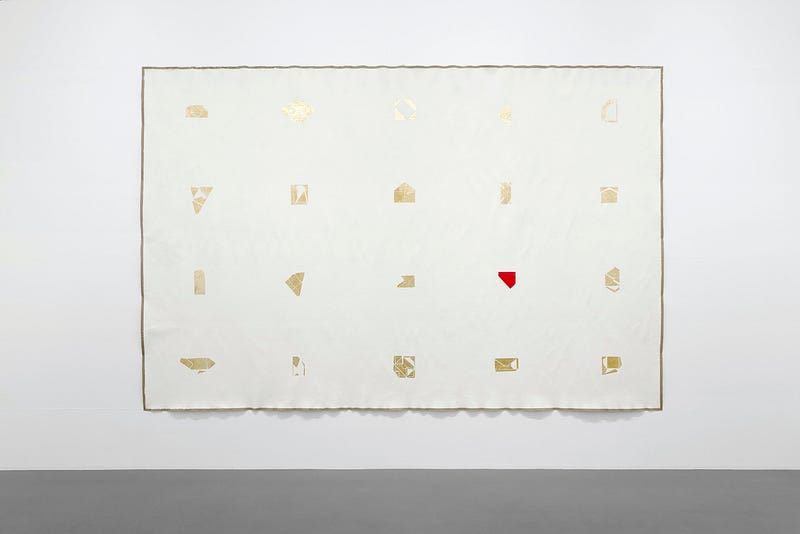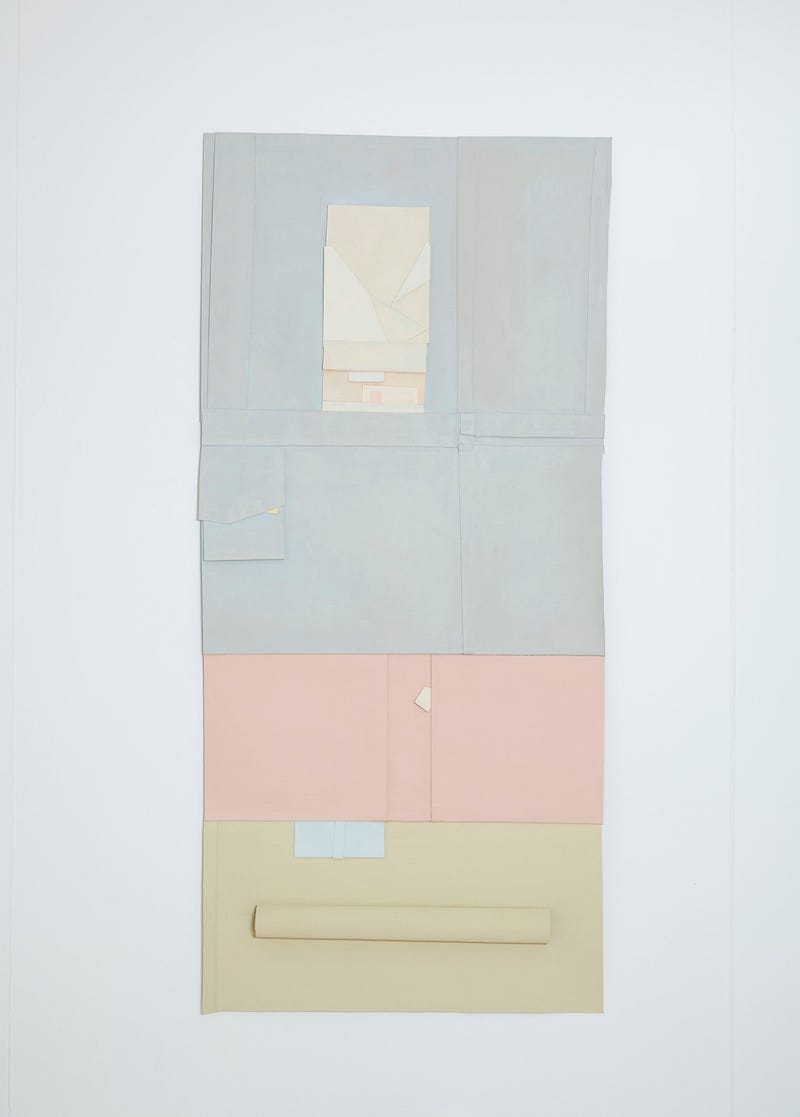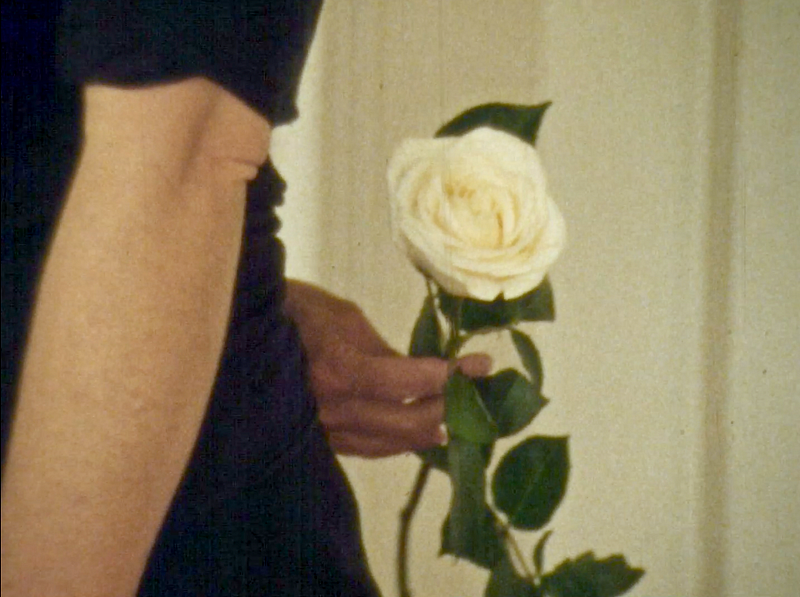23.02.2022
Chasing fake realities
Εικαστικες Τεχνες
Γλώσσα πρωτότυπου κειμένου: Αγγλικά
Some years ago, in 2016, I came across Karolina Krasouli’s name on an artwork label at the Rennes Biennale in France. It was the first contact I had with her work, before I had met her: a series of folder-like forms creased into different shapes and painted in colors, which from afar gave the impression of a mysterious alphabet. It was a reference to Emily Dickinson’s envelope poems, a series of manuscripts and notes on parts of unfolded envelopes. Dickinson, like many other authors that she studied while in high school, such as Sylvia Plath, Shakespeare, Robert Rost, TS Eliot, John Keats, Edgar Allan Poe, and Ted Hughes among others, shaped her adolescent universe before she even knew that she would become an artist. Recently, in an old magazine of the Arsakeio school where I studied, I came across Krasouli’s name again but in a different context — as a 12 year old she had won the Literature Prize for a text she had written as a response to a painting in a school competition. In a strange way, this coincidence made sense to me. Krasouli’s recent works function as reassuring worlds, devoid of distortion, inviting one to get lost in them for a time, like the reprieve a child lost in the oppressive reality of middle school might find in literature.

Seeing today the works of her first solo exhibition in Athens, entitled Promise, I realize that it is clearly a sequel, an enlargement of the folded envelopes of 2016, though this time the paper is replaced by the canvas. A continuous play of scale, perhaps an inversion of it, in which some details refer to objects, but are not exactly familiar to the eye. At the same Biennale, another work dealt with the theme of scale: that of Mark Manders, whose work is a reference for Krasouli. His obsession with objects and scale is usually reported with mathematical precision in the titles of his works, such as Chair (100%) or Kitchen (reduced to 88%). 88% is for him a minimal reduction of scale that you feel more than you see. He refers to photography as the pre-eminent medium that changes the scale of objects and perceives his works as three dimensional photography. The reference to photography and its relationship to the object is something that particularly concerns the work of Krasouli who, except her experimentation with painting, works simultaneously with photography and super 8.

After many years of studying clinical psychology, a fated internship at Saint-Remy de Provence Hospital (next to the psychiatric hospital where Van Gogh was hospitalized) made her realize that not everything can be put into words. She left the scientific community and found herself chasing fake realities instead of real answers; as a way of giving space to these kind of things that do not make any sense. Now, I see in her work remnants of the scientific process — in terms of the obsession, the methodology and the protocols that she establishes in her process. In fact, the working method functions like a personal healing process, a trance-like, meditative process that takes place in the absence of words. This process, especially the one employed in the Promise series, is governed by a very specific, long and arduous protocol. The work begins without any draft sketch, but with a decision on the canvas’s approximate dimensions, which is defined once the color is applied. The traditional process of preparing a canvas in painting, that is, passing several layers with a gesso, becomes the work itself. Mixed with paint pigments of many different colors that give paradoxically a pale tone, the gesso is the material Krasouli uses to create monochromatic surfaces that become so hard that are almost impossible to bend. This difficulty of bending and binding this material becomes the challenge that the artist overcomes by folding the canvas, often more than once, and sewing it with hidden seams that are not visible. The result, hiding the artist’s effort with mastery, gives the illusion of naturalness, like the image of an accidentally folded corner of a thin paper.
Decisions about other monochrome surfaces that are sewn in the background are made in terms of composition; the more specific the form, the more the narrative emerges. One such example is found in her work Departure in which the artist imagines someone who has emptied his/her personal things on a bed and is getting ready to prepare his/her suitcase. Between image and object, these works are hybrids, something like two-dimensional objects or three-dimensional pictures, like an envelope, which is almost, but not exactly, two-dimensional and at the same time has the capacity to contain something, which remains unknown and hidden from the outside.

Like Krasouli’s painting series, super 8 film is an object and potentially an image at the same time. In the same way that scaling and materiality shift in her Promise series, so Super 8, as a medium, presents a dashed reality — a set of sewed images where flow and duration become an almost conscious, but enjoyable, illusion. In her super8 film La Rose Krasouli dives in the ontology of the object by filming a story told about Agnes Martin — another major reference for her work — , where the appearance and the disappearance of a rose raises the question of the beauty contained in the memory of an object more than in the object itself.
In Krasouli’s work there is no recurring theme; instead there is a process and a constant need to illuminate parts of what we call the everyday. Language is present, without ever being included, but appears discreetly through the apparent contradictions that characterize her work; the poetry, the lyricism, the hidden and the uncanny versus systematic research, repetition, and method. Viewing her work, we see narratives featuring time and objects, which invite us to listen carefully to them and learn how to speak their language.
Karolina Krasouli (SNF ARTWORKS Visual Arts Fellow 2019) is a visual artists working with painting, photography and film.
Eva Vaslamatzi (SNF ARTWORKS Fellow 2019) is an independent curator and writer currently based in Athens, Greece.



